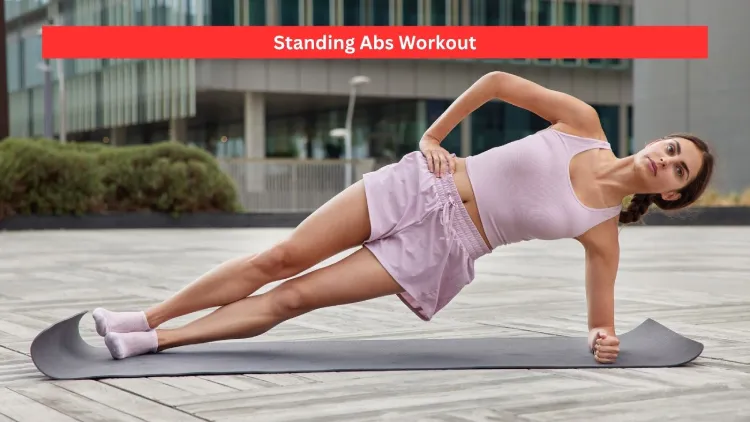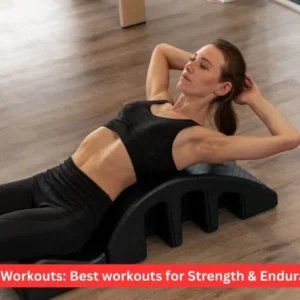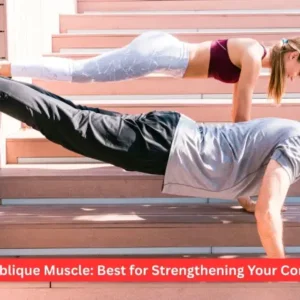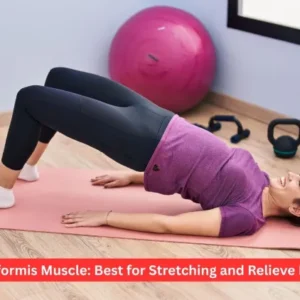Crunches, planks or sit-ups on a mat are what most people have been conditioned to work on a mat. Did you know that you can develop a strong and very defined core and never go to the floor? Standing ab exercise is an active and functional mode of exercising the abdominal muscles without lying down. It is efficient, low intensity, and also suits everyone regardless of fitness levels.
The scope of this article is everything that you need to know about introducing a standing abs workout to your routine. You will find out about the main advantages of training the core when you stand up – better functional strength, more calories, fewer loads on the neck and back. We are going to go through some of the best exercises, too, some of which include the oblique crunches, knee raises, woodchoppers, and toe touch, all of which are aimed at working every single part of your abdominal area.
This kind of exercise needs no equipment and minimal space, regardless of where you are (home, office, on the way, etc.). We will also provide top tips to make sure you are in the correct form, as well as some ideas on how to make each movement as productive as possible, with a sample 10 minutes of standing ab work that you can begin today. Moreover, we will discuss who can take advantage of this type of exercise and what makes this exercise an intelligent addition to almost any training program.
Are you on the hunt to find a standing ab workout to focus on your core, burn off calories, and get a stronger posture all the time, you ever lying down? You may be just seeking what every other person is also seeking, and that is to find a standing abs workout.
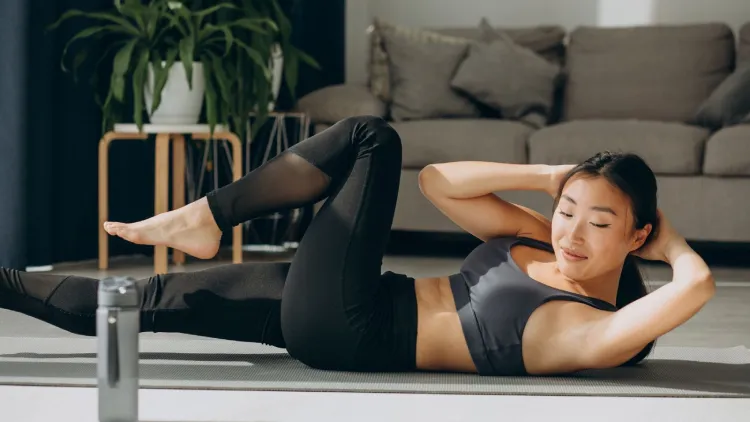
Why Choose a Standing Abs Workout?
Standing abs workout is getting more and more popular, and rightly so. They are multi-purpose, convenient and productive. The following are the main advantages that make this form of core training worthwhile to consider when it comes to being integrated into your fitness regimen.
Enhances Functional Strength
The technique of performing a standing abs workout teaches your core how to behave in the real world. Most everyday activities involve bending, twisting, reaching, lifting, and core stability is involved. Contrary to standard ab routines that work the core in a lying position, which holds little relevance to activities in the real world, standing routines increase the difficulty by making your muscles work whilst standing, thus increasing the versatility of such training.
Greater Calorie Expenditure
As you are not confined to a matexercisingng your abs standing up will tend to use compound movements, where different sets of musculature are used in concert. This heightens the rate of your heartbeat and helps you burn plenty of calories within a short time. The cardiovascular aspect of the exercises also enhances muscular endurance as well as pumps up the cardiovascular system.
No Equipment or Mat Required
The fact that it uses non-specialised equipment to do a standing abs workout is one of the things that makes it one of the most appealing. No gym? No problem. It may be done in your living room, bedroom, office or even outside. You do not need to lie on a ma,t, as most of the movements can be performed using only your body weight. This makes the standing abs workout very good to accommodate busy people, so that they too have time to exercise even when travelling.
Decreased Neck and Back Strain
Other individuals do not like the traditional crunches and sit-ups, especially when an individual has lower back or neck problems. This strain can be reduced significantly by including a standing abs workout, but still with excellent effect on the same muscles. This will only require you to maintain a raised and straightened body posture to tighten your core without exerting extra strain towards your spine or cervical regions.
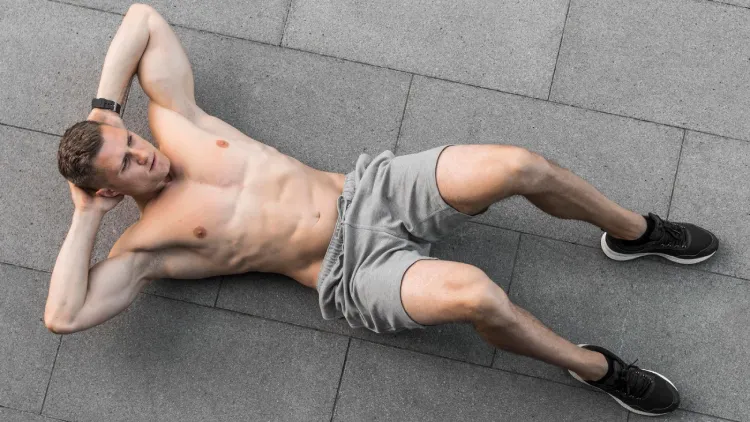
Top Standing Abs Workout Moves
To make it varied and fun, you should add variety to your standing abs workout. The following are some of the good exercises you can apply to activate your core muscles when you are on your feet. Do as many reps as you can of each exercise, 1015 is the target. Do the sequence again two to three times, depending on your fitness level.
1. Standing Oblique Crunch
How to Do It: Stand upright and keep your feet apart, and your hands should be behind your head. Raise the right knee and bring down the right elbow to meet it. Concentrate on drawing in the side of the abdomen. Go back to the beginning and then turn to the left.
Muscles Used: Obliques, hip flexors, lower abs
This action facilitates contouring of the sides of your waist and builds the muscles that assist in rotating the trunk as well as sideways bending.
2. Standing Cross Crunch
How to Do It: Start with feet hip distance apart. Bend the right knee and twist the torso to your left elbow. Go back to the starting point and do the other end.
Muscles Used: Obliques, rectus abdominis
As it involves the whole trunk, she delegates the entire core and also fosters integration of the upper and lower body, which is another reason that the process is the centrepiece of any standing abs exercise.
3. Dumbbell Side Bends
How to do it: You need to hold a light dumbbell in one hand and the other on the waist. Bend slowly side with the dumbbell until reaching a stretch position, wait and then get back to starting. Do a set on one side and then move to the other.
Muscles Targeted: Obliques, erector spinae
Side-bending exercises stabilise the core and work particularly well on the waist when they are controlled. In case you are new to weight-loading exercises, then begin with body strength training and then move to small dumbbells.
4. Standing Knee Raises
How to Do It: Marching on the spot with all possible lifts of the knees combines the work of the abdominal muscles during the movement. Maintain an erect position with the upper body and do not lean backwards.
Muscles worked: Lower abs, Hip flexors.
Knee raises are not a complicated but effective type of exercise, and this can be used to target the lower part of your abdominal wall. Include them in your standing ab routine so that your standing ab routine builds lower core strength and endurance.
5. Woodchopper (Bodyweight or Dumbbell)
How to Do It: Assume a semi-squat position and have the hands or a dumbbell located at the right hip. When you get up, turn your body and use your arms horizontally across your body to the left side as though you are chopping something. Come back and repeat. Turn over and do all the reps.
Stimulated Muscles: Obliques, transverse abdominis, shoulders
Such a rotational exercise of the entire body will not only help you strengthen the abdominals but will also increase flexibility and coordination. It is an abdominal exercise that borrows strength from any standing abdominal workout program.
6. Toe Touches
How to Do It: Place the feet at the hip-width apart position. Put your hands above your head. Bring up your right leg, and extend your left hand and touch your toes. Go back and change sides.
Targeted Muscles: Upper abs, lower abs, hamstrings
This exercise enhances flexibility, coordination and core strength. It is a great supplement to your standing abdominal exercise as a means of boosting balance and functional power.
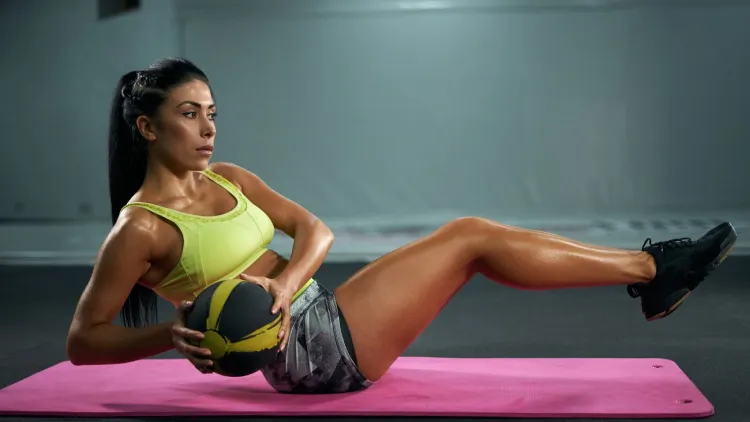
Tips for an Effective Standing Abs Workout
To do standing abs exercise to the max, using the right form and technique is important. The following are some of the tips to remember:
- Bring in Your Core: As you move, concentrate on tensing up the centre of the body. It is not only the use of arms or legs when you use your core to drive the motion.
- Keep It Under Control: Breathe out and crunch or twist, and then breathe in as you come back to the start. Endurance and performance are enhanced with proper breathing.
- Sit with Good Posture: Sit up straight and have the spine in a neutral position. Do not bend forward too much or arch your back.
- Begin with Schwartz and Increase Step by Step: First, start with bodyweight, and once you have mastered the form and technique, then you can start increasing the weight in the form of dumbbells or resistance bands.
- Quality over Quantity: It is better to do fewer reps with good form than many reps with a bad posture or an uncontrolled speed.
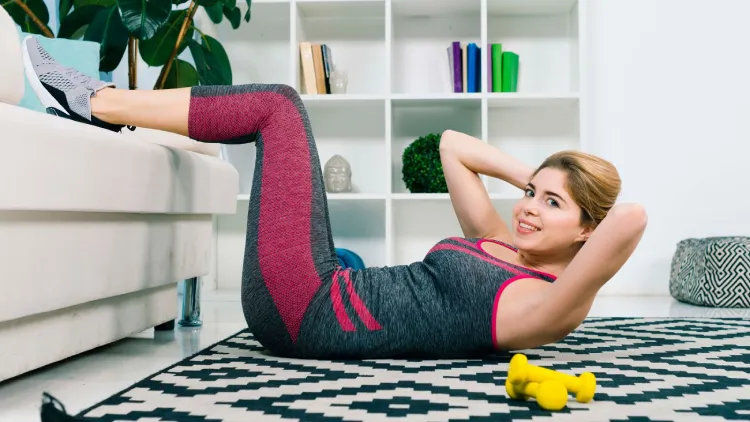
Who Should Try Standing Abs Workouts?
A broad range of people is best suited to standing abs workouts. This standing abs exercise is a nonweight-bearing exercise that allows anyone, whether an athletic novice or expert, to hit a core stabilisation area as well as enhance balance and posture. It is particularly handy in the case of:
- Newbies who cannot perform floor exercises or are uncomfortable performing them
- The elderly who want to enhance the proper stability of the core and events of falling
- In the case of the office workers who are not moving during the day as much as they would prefer
- People who are too busy and do not want an equipment-heavy routine.
- Any individual who wants to prevent the straining of the spinal column should recover from lower back problems
The fact that the standing abs exercise does not need a mat or some special equipment also makes it an excellent choice of exercise to use on the road, with new mothers, and just when an individual wants an easy approach to exercise.
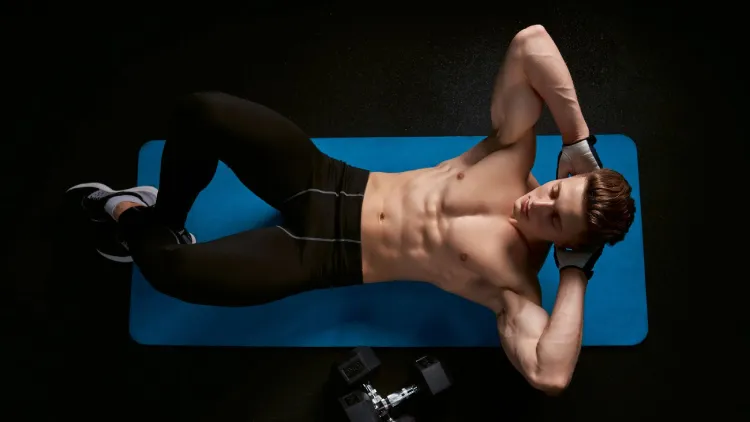
Final Thoughts
Standing abs workout is not a mere creative use of crunches as a substitute method but a utilitarian, effective one in order to strengthen the core, posture, and even the overall improvement in functional fitness. The fact that you stay on your feet allows your abs to be engaged in a manner which applies to real life, and this is why this workout is very applicable in real life.
Even better, you do not need expensive equipment to perform the best standing abs exercises that can be performed almost everywhere. No matter whether you just need to add diversity to your routine or need overall waist toning or avoid developing back pain, doing standing ab exercises would allow you to reach the needed results within a short period.
Start with minor movements, be regular, and in a very short period of time, you will start to feel and see the advantages. Turn the standing abs drill into the essential part of your fitness practice- and you will feel the core training in a completely new manner.
Frequently Asked Questions
1. Can standing workouts on the abs help to lose weight?
Indeed, standing ab exercises may help a person lose weight when a balanced diet and a general fitness regimen are observed. Such exercises stimulate many muscles in your body and increase your heart rate, which may allow you to burn calories and body fat in the long run. Although no one exercise will target the belly fat in particular, exercises that focus on the core, such as a standing abs exercise, will help tone the abdominal muscles and contribute to losing fat everywhere in general.
2. Is it possible to do a standing abs workout daily?
Sure, working on the abs standing up every day is a possibility; however, if you pay attention to your body and do not overwork your muscles, then you are good. A variety of standing ab exercises are low impact and utilise body weight; therefore, most of them can be used regularly without injury. Nonetheless, it would be a good idea to introduce resting days or switch between the core-centred exercise programs and a full-body workout to avoid muscle fatigue and achieve better recovery.
3. Do I need any kit for a standing abs workout?
Most standing-up abs exercises do not need any equipment. In all the moves, you can utilise your body weight. But to make it more resistant and build some strength, you can introduce light dumbbells, a resistance band, or a medicine ball when you feel good at performing properly. This is what makes stand-up abs easy and versatile so that one could practice them any time, any place, be it at home or work or even when travelling.
4. Who is an average person who should not attempt standing abs workouts?
Standing ab exercises are safe in general, and beginners may be able to work with them, although individuals with a problem of balance, having the experience of surgery, or those with serious cases of back problems are advised to seek medical attention first. Adjust exercises to your fitness level and take a rest when you experience any pain. Pregnant patients or patients healing after pregnancy are recommended to have a doctor’s clearance and abide by core-safe adjustments.

